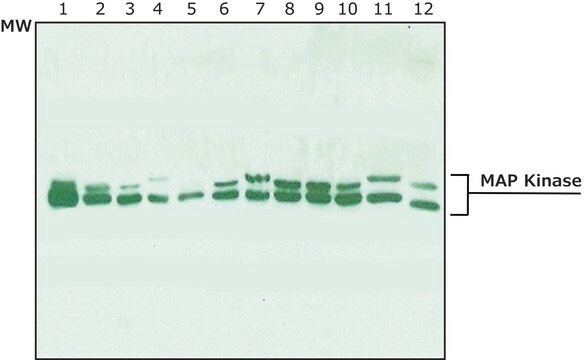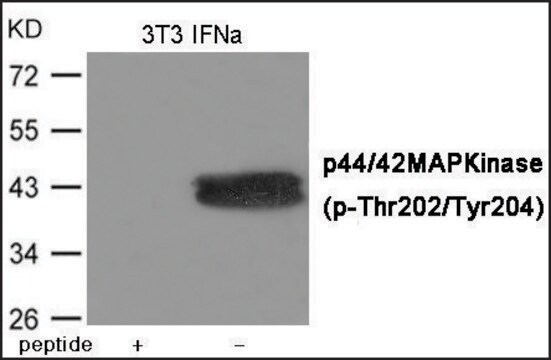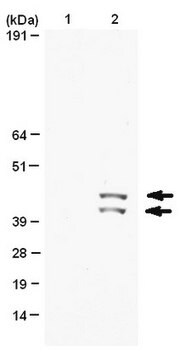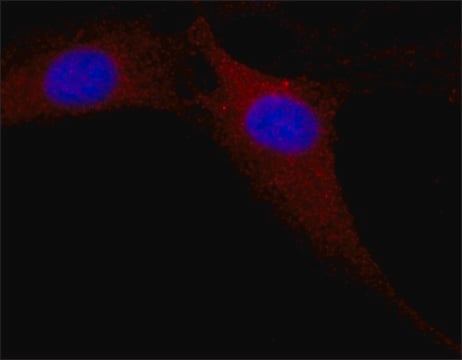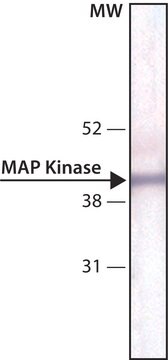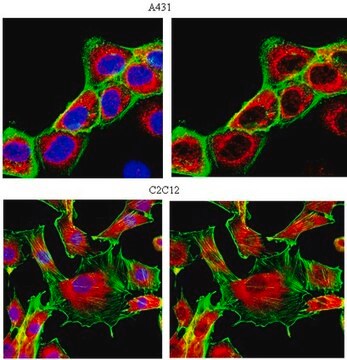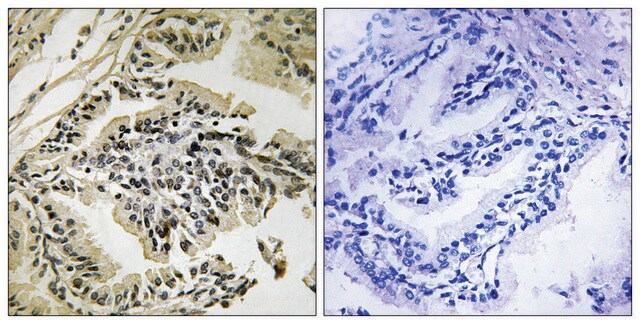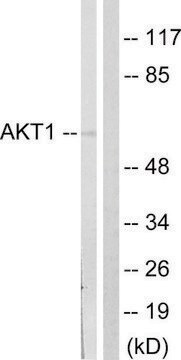M8159
Monoclonal Anti-MAP Kinase, Activated (Diphosphorylated ERK-1&2) antibody produced in mouse
clone MAPK-YT, ascites fluid
Sinonimo/i:
Monoclonal Anti-MAP Kinase, Activated (Diphosphorylated ERK-1&2)
About This Item
Prodotti consigliati
Origine biologica
mouse
Livello qualitativo
Coniugato
unconjugated
Forma dell’anticorpo
ascites fluid
Tipo di anticorpo
primary antibodies
Clone
MAPK-YT, monoclonal
PM
antigen ERK-1 44 kDa
antigen ERK-2 42 kDa
contiene
15 mM sodium azide
Reattività contro le specie
human, Caenorhabditis elegans, Xenopus, Drosophila, hamster, rat, bovine, mouse, yeast
tecniche
immunocytochemistry: suitable
immunohistochemistry (formalin-fixed, paraffin-embedded sections): suitable
immunoprecipitation (IP): suitable
indirect ELISA: suitable
western blot: 1:10,000 using rat brain extract
Isotipo
IgG1
N° accesso UniProt
Condizioni di spedizione
dry ice
Temperatura di conservazione
−20°C
modifica post-traduzionali bersaglio
unmodified
Informazioni sul gene
human ... MAPK1(5594) , MAPK3(5595)
mouse ... Mapk1(26413) , Mapk3(26417)
rat ... Mapk1(116590) , Mapk3(50689)
Cerchi prodotti simili? Visita Guida al confronto tra prodotti
Categorie correlate
Descrizione generale
Specificità
Immunogeno
Applicazioni
Monoclonal Anti-MAP Kinase, Activated (Diphosphorylated ERK-1&2) may be used for the localization of the active, dually-phosphorylated, form of MAP kinase using various immunochemical assays such as immunoblotting of cultured cells and tissue extracts, ELISA, immunocytochemistry, immunoprecipitation, and in immunohistochemistry (formalin and formaldehyde-fixed sections). Reactivity has been observed with human, bovine, rat, mouse, Drosophila, Spodoptera frugiperda, and yeast.
Monoclonal Anti-MAP Kinase, activated (Diphosphorylated ERK-1&2) antibody has been used in plasmid and transient transfection and western blotting.
Azioni biochim/fisiol
Stato fisico
Stoccaggio e stabilità
Esclusione di responsabilità
Non trovi il prodotto giusto?
Prova il nostro Motore di ricerca dei prodotti.
Codice della classe di stoccaggio
12 - Non Combustible Liquids
Classe di pericolosità dell'acqua (WGK)
WGK 2
Punto d’infiammabilità (°F)
Not applicable
Punto d’infiammabilità (°C)
Not applicable
Scegli una delle versioni più recenti:
Possiedi già questo prodotto?
I documenti relativi ai prodotti acquistati recentemente sono disponibili nell’Archivio dei documenti.
I clienti hanno visto anche
Articoli
Alzheimer's disease (AD) is the most common cause of dementia in the elderly and is characterized by gradual loss of cognitive functions.
Il team dei nostri ricercatori vanta grande esperienza in tutte le aree della ricerca quali Life Science, scienza dei materiali, sintesi chimica, cromatografia, discipline analitiche, ecc..
Contatta l'Assistenza Tecnica.